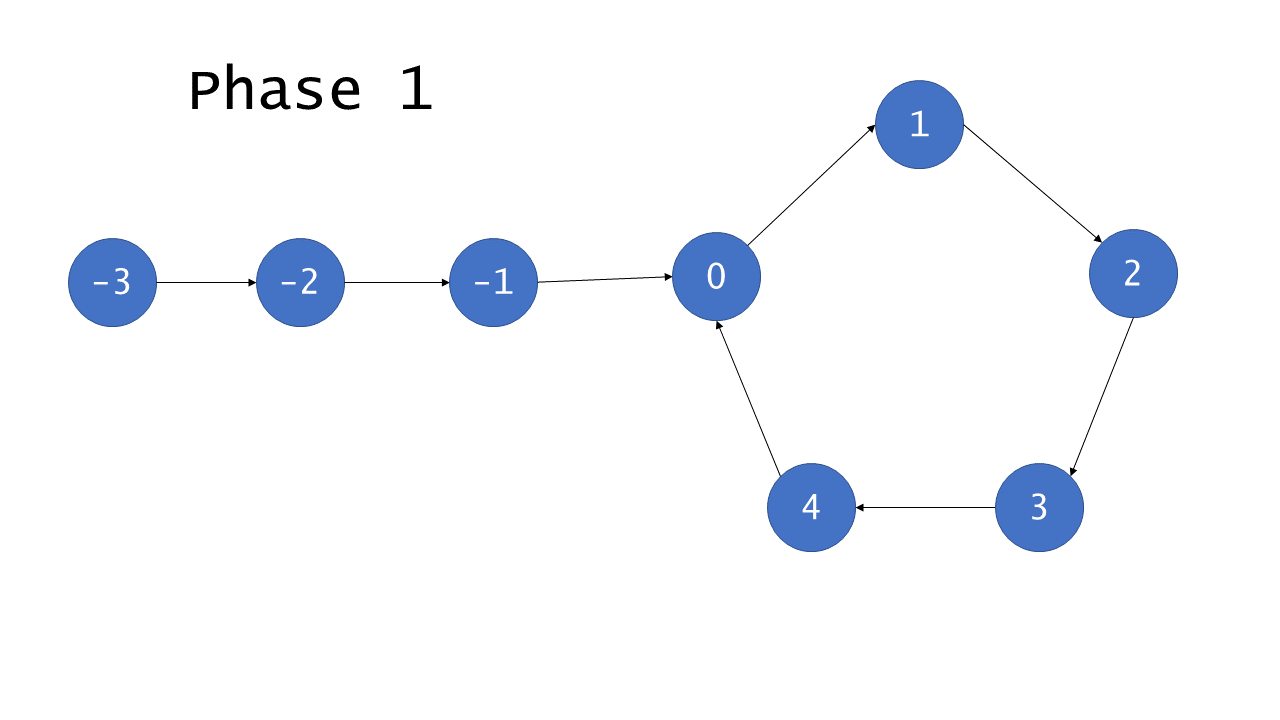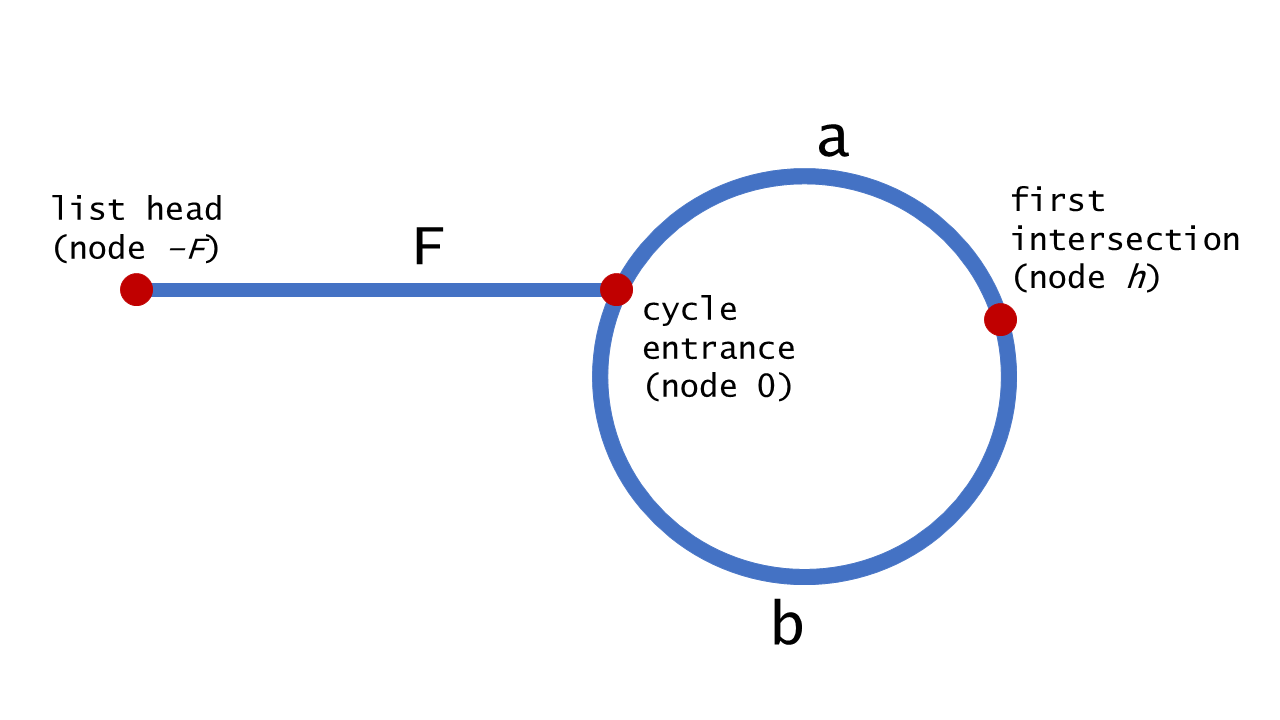问题:
给定一个链表pHead,判断链表中是否存在环,如果存在,找出入环节点。
方法一:
哈希表,用一个 HashSet 保存已经访问过的节点,我们可以遍历整个列表并返回第一个出现重复的节点。
如果有环,则哈希表中已存在的节点就是入环节点。如果没环,不会有相同的节点。
- 时间复杂度O(n)
- 空间复杂度O(n)
代码:
public ListNode detectCycle(ListNode head) {HashSet<ListNode> visited = new HashSet<ListNode>();ListNode node = head;while (node != null) {if (visited.contains(node)) {return node;}visited.Add(node);node = node.next;}return null;}
方法二(Floyd算法):
快慢指针,pFast每次走两步,pSlow每次走一步。如果最终pFast == null 则不存在环。如果最终pFast == pSlow 则存在环。
如果存在环,则让pFast重新指向头结点,然后pFast和pSlow一起走(每次一步),则下次pFast == pSlow的时候,pFast和pSlow即为入环节点。
- 时间复杂度 O(n)
- 空间复杂度 O(1)
代码:
public ListNode DetectCycle(ListNode head) {
if(head == null || head.next == null) {
return null;
}
// pFast每次2步,pSlow每次1步
ListNode pFast = head.next.next, pSlow = head.next;
while (pFast != pSlow) {
pSlow = pSlow.next;
if(pFast != null) {
pFast = pFast.next;
}
if(pFast != null) {
pFast = pFast.next;
}
}
// 如果pFast == null,说明到达链表结尾,不存在环,否则存在环,返回pFast即可
// 判断是否存在环,到此即可
if(pFast == null) {
return null;
}
// pFast重新指向头结点
pFast = head;
// 两个指针同时走,相等时即为入环节点
while (pFast != pSlow) {
pSlow = pSlow.next;
pFast = pFast.next;
}
return pFast;
}
方法二证明:
首先,在环中快指针肯定会追上慢指针。这样想,每走一步,两者之间距离会减少1,最终肯定会相遇。
利用这一点我们可以判断出是否存在环。
数学证明(链接)
环中的节点从 0 到 C−1 编号,其中 C 是环的长度。非环节点从 −F 到 −1 编号,其中 F 是环以外节点的数目。 F 次迭代以后,慢指针指向了 0 且快指针指向某个节点 h ,其中 F≡h(modC) 。这是因为快指针在 F 次迭代中遍历了 2F 个节点,且恰好有 F 个在环中。继续迭代 C−h 次,慢指针显然指向第 C−h 号节点,而快指针也会指向相同的节点。原因在于,快指针从 h 号节点出发遍历了 2(C−h) 个节点。
h+2(C−h)=2C−h
≡C−h(modC)
因此,如果列表是有环的,快指针和慢指针最后会同时指向同一个节点,因此被称为 相遇 。
接下来,找入环节点。
有如下等式:
2(F + a) = F + N(a + b) + a
2F + 2a = F + 2a + b + (N - 1)(a + b)
F = b + (N - 1)(a + b)
即pFast从头走了F步后,pSlow从相交节点开始走了(N-1)圈环后,又走了b步,到达入环节点。

